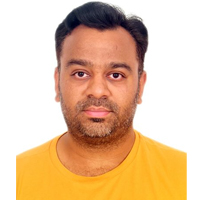Assessment of on farm agrobiodiversity and its role in food sufficiency in mid hill, Nepal
Published on: 31st March, 2023
A survey was conducted in the agricultural farms in Dhulikhel Municipality, mid-hill, Kavre, Nepal aiming at assessing the status of agrobiodiversity with the purpose of understanding its role in food security taking altogether 133 farming households scattered in several settlements with lowland, upland, and home garden being the general agricultural land use systems. Biodiversity index: Shannon-Wiener Index was used to assess diversity of plant. The main purpose was to assess the farm agrobiodiversity and to find out whether biodiversity level has a direct link to household food self-sufficiency. For descriptive analysis frequency, percentage, mean and standard errors were used. In the case of inferential statistics independent sample t - test and binary logistic was used to find the odd ratio of practicing home garden. The result showed that the average landholding size was 0.66 ha/household with 0.37 ha, 0.3 ha, and 0.06 ha being upland, low land, and home garden, respectively. A total of 136 plant species were documented out of which 74 were the effective number of species in the study area. Among the used plants, fodder shared 27% of the total plant diversity followed by fruit (21%), vegetable (19%), medicinal plants (8%), pulses (8%), spices (7%), oilseeds (5%) and cereals (5%). Similarly, the mean livestock unit (LSU) was 2.65. The overall Shannon-Wiener Index was 4.30 indicating high diversity of species and 87.7% of the species were evenly distributed. The Index was higher for vegetable (3.11) followed by fruits (2.9) and fodder (2.85). Higher diversity was found in fodder trees in lowlands whereas vegetable species were more diverse in upland and home garden. Similarly, the Index was 4.29 in the upland whereas it was 4.078 in the home garden followed by 3.13 in the lowland. The evenness was 0.899, 0.87, and 0.74 in upland, home garden and lowland, respectively. Higher species diversity revealed that the site was rich in agrobiodiversity. A significant positive correlation (0.22) was observed between Shannon-Wiener Index and farming years. Similarly, positive correlation (0.33) was found between an increase in the level of agrobiodiversity and food self-sufficiency. The result demonstrated that increasing crop diversity increases the household’s ability towards food sufficiency implying the need for the formulation and implementation of efficient policy to conserve the agrobiodiversity at municipality as well as national levels.




